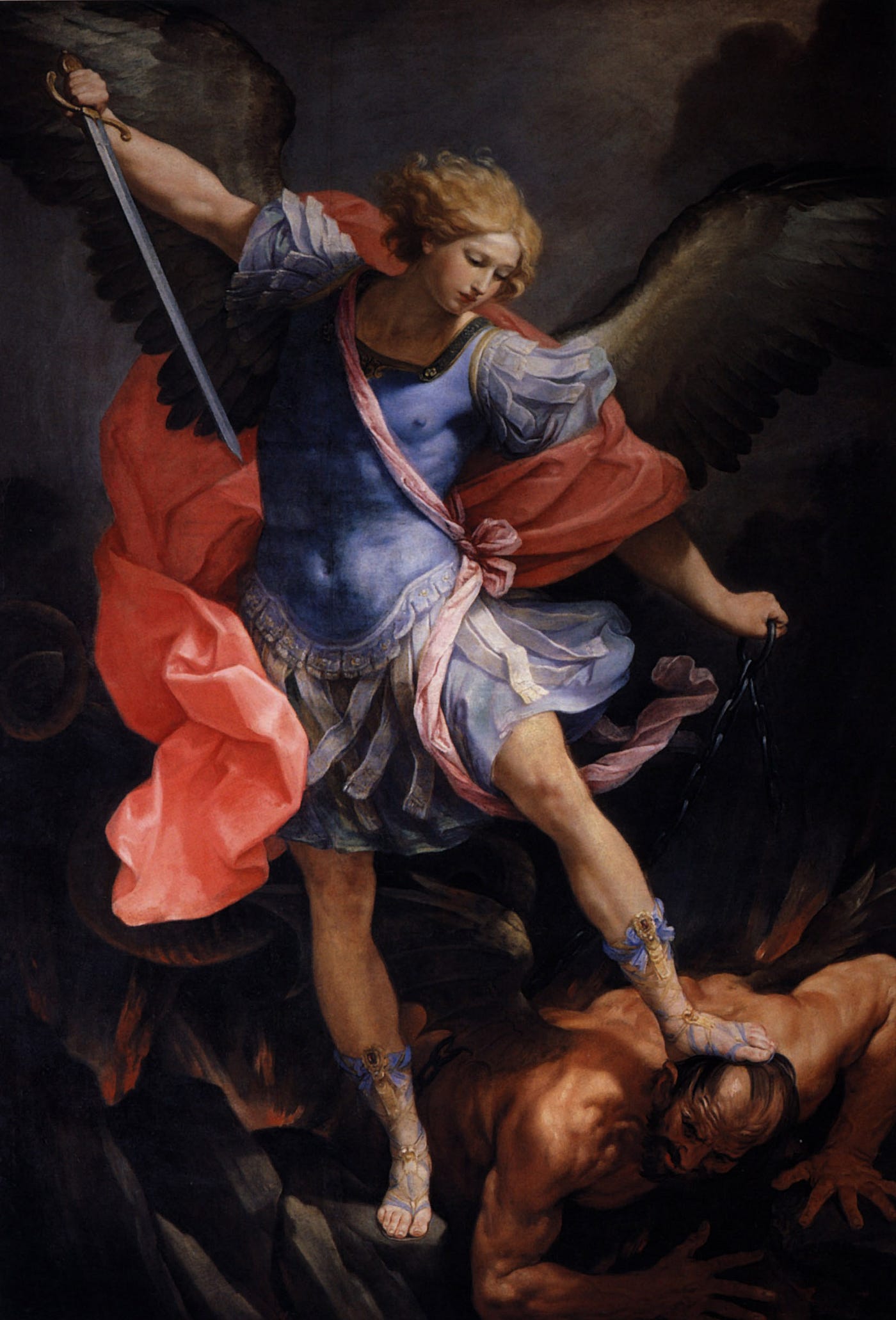what do angels really look like according to the bible
How Angels Really Look Similar, Co-ordinate to the Bible
Sky might be more baroque than blissful

 W hen people recall of Angels, they mostly picture a majestic man-like winged beingness. Cherubs, which are a blazon of angel also mentioned in the Bible, have been reimagined to fit the prototype of Cupid — cute babies with tiny wings.
W hen people recall of Angels, they mostly picture a majestic man-like winged beingness. Cherubs, which are a blazon of angel also mentioned in the Bible, have been reimagined to fit the prototype of Cupid — cute babies with tiny wings.
However, these conceptualizations aren't entirely accurate. Angels, according to the holy text, are a chip more than bizarre.
According to the Bible, at that place are unlike types of angels which surround God. Maimonides, a Jewish scholar from the 12th century, ranked these beings in terms of importance in the hierarchy of Sky. What arises is a description of iv beings from that hierarchy that have been explained in detail in scripture, and the historical circumstances around their conceptualization.
Cherubim

The Cherubim, afterwards shortened to Cherub, is the lowest in rank among the four. The Bible describes these beings as beast-human hybrids, tasked with guarding the garden of Eden against humankind.
In the Book of Ezekiel, the prophet'southward vision depicts them as having four faces: that of a lion, an ox, an eagle, and a human. They have straight legs, four wings, and balderdash hooves for feet that gleam similar polished brass. One prepare of wings covers their body, and the other is used for flight.
This description is far from how we imagine the Cherub at present. While scholars credit its modern-day epitome to Greek and Roman deities similar Cupid, they attribute the detail in the Bible to cultural exchanges with ancient Babylonia, Syria, and Egypt. The Cherub's role of guarding sacred places and their mixed appearance is similar to that of the Babylonian Lamassu, Egyptian Sphynx, and Hittite Griffin.
Malakim

The term Angel comes from the Greek word Angelos, which originated from the Hebrew word for messenger, Mal' akh. The Malakim are messengers of God and are the closest looking to us humans. They are 3rd in rank amongst the iv.
In the Erstwhile Testament, they acted on God's behalf, equally did the angel of death in the Passover story or Michael, the archangel who protects heaven. In the New Testament, they often acted as messengers, like Gabriel, who told Ally of her immaculate conception. These named angels are often the ones people think of when asked to imagine ane.
Yet, while the Malakim looked like human beings, there was no mention of them having wings in the Bible.
The earliest known Christian image of an angel from the mid-3rd century was without wings. It wasn't until the tardily 4th century that artists reimagined angels with the possession of wings. Co-ordinate to some researchers, this was done to correspond their sublime nature, despite artists knowing that scripture did not describe them equally having wings.
Seraphim

According to the prophet Isaiah, the Seraphim is an angelic existence that surrounds the throne of God singing "holy, holy, holy" in unison to God'southward approach. The prophet describes them as having six wings, ii of which are for flying, while they utilise the remainder to cover their heads and feet. Seraphim are 2d highest in rank co-ordinate to Maimonides's angelic hierarchy.
One may trace the historical influences for the Seraphim from its name. Seraphim derives from the Hebrew give-and-take "Seraph," which means "to burn" in English. Earthworks deeper, the Hebrew discussion "Saraph" means "venomous desert snake". In ancient Egypt, people referred to the cobra as "the flaming one." Its icon was chosen Uraeus, and information technology usually adorned the Pharoah's headpiece.
Several historians speculate that the authors of the Old Testament derived Seraphim's wings and flames from Egyptian imagery and associations with the cobra.
Ophanim

The Ophanim, or "the wheels," is arguably the most baroque being in the Bible. Ezekiel's account in the Bible describes them as beings fabricated out of interlocking gold wheels with each cycle'due south exterior covered with multiple eyes. They move by floating themselves in the sky. As the highest in Maimonides's hierarchy, they are tasked with guarding God's throne.
At that place is no exact historical origin for the Ophanim. Josef F. Blumrich, a former NASA employee, theorized that Ezekiel'southward vision of the wheels and other angels might have been a UFO sighting. However, critics label him as a conspiracy theorist.
Even so, other authors claim that an ingested psychedelic substance caused the prophet's vision. Scholars have likewise proposed that the prototype was merely a metaphor for God'south mystery.
Terminal thoughts
Information technology's interesting to take a step dorsum and observe the conception of these beings from a secular standpoint. Centuries of culture, geography, and history have shaped what we have collectively forgotten and re-imagined as angels.
The otherworldly nature of these beings is besides of annotation to believers in Christian and Jewish scripture. If they are worthy, they'll exist spending an eternity in Heaven with God — alongside these bizarre beings.

Source: https://historyofyesterday.com/how-angels-really-look-like-according-to-the-bible-d4d339112619
0 Response to "what do angels really look like according to the bible"
Post a Comment